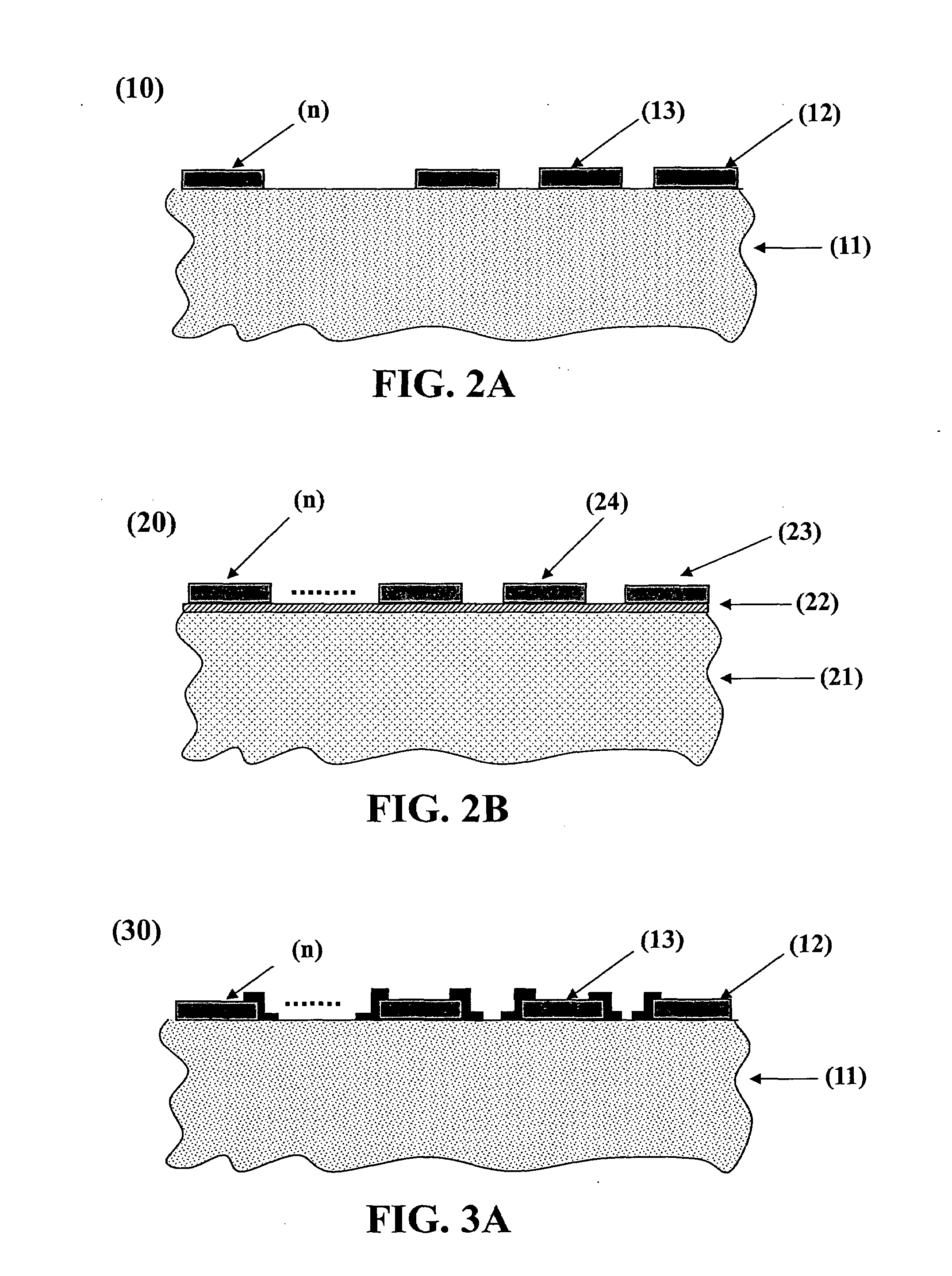Method of Treating Non-Refrigerated, Spectrally-Selective Lead Selenide Infrared Detectors
a lead selenide, non-refrigerated technology, applied in the direction of optical radiation measurement, instruments, material analysis, etc., can solve the problems of low detachment efficiency, and high cost of both detectors to be cooled, so as to achieve low thermal expansion coefficient mismatch, good adhesion properties, and high detachment efficiency
- Summary
- Abstract
- Description
- Claims
- Application Information
AI Technical Summary
Benefits of technology
Problems solved by technology
Method used
Image
Examples
Embodiment Construction
[0024]FIG. 1 shows a flowchart 100 illustrating one embodiment of the method to process multicolor polycrystalline lead selenide detectors. The method begins at step 110 by providing a suitable substrate; depending of the type of device to be processed the substrate material can be a dielectric material transparent to the medium wave infrared radiation (sapphire, . . . ) or a semiconductor material also transparent to the medium wave infrared radiation (silicon, germanium etc.). In this case it is necessary to diffuse or deposit a thin dielectric layer on their surface in order to avoid current leaks between sensors. The method continues at step 111 delineating and depositing layers corresponding to the first interference filter (color 1). Its delineation can be accomplished using mechanical masks or photolithography methods. Step 112 corresponds to delineation and deposition of second interference filter layers (color 2). Analogue to color 1 its delineation can be accomplished usin...
PUM
 Login to View More
Login to View More Abstract
Description
Claims
Application Information
 Login to View More
Login to View More - R&D
- Intellectual Property
- Life Sciences
- Materials
- Tech Scout
- Unparalleled Data Quality
- Higher Quality Content
- 60% Fewer Hallucinations
Browse by: Latest US Patents, China's latest patents, Technical Efficacy Thesaurus, Application Domain, Technology Topic, Popular Technical Reports.
© 2025 PatSnap. All rights reserved.Legal|Privacy policy|Modern Slavery Act Transparency Statement|Sitemap|About US| Contact US: help@patsnap.com



